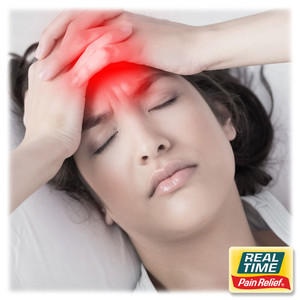Understanding Ankylosing Spondylitis: A Comprehensive Guide
Posted by Dennis R. Escalera on 1st May 2024
Ankylosing spondylitis (AS) is a form of arthritis that primarily affects the spine, leading to severe pain and stiffness. This condition is part of a larger group known as spondyloarthritis, which can cause inflammation in the spinal joints and result in their eventual fusion. Here, we delve into the nature of AS, its causes, symptoms, diagnostic procedures, and treatment options, providing a rounded understanding of the condition.
Causes and Risk Factors
The precise cause of ankylosing spondylitis remains unknown, but genetics play a significant role. The presence of the HLA-B27 gene is closely associated with the condition, although not everyone with the gene will develop AS. This suggests that other genetic and environmental factors also contribute to the disease's onset.
Symptoms and Progression
Initial symptoms typically include lower back pain and stiffness, which worsen after periods of inactivity or during the morning. As the condition progresses, it can affect other parts of the spine and even lead to issues with other joints and organs, including the eyes, heart, lungs, and kidneys. Understanding these symptoms is crucial for early diagnosis and treatment.
Diagnosis
Diagnosing AS involves a comprehensive evaluation that includes a patient's medical history, physical examinations, and various imaging tests such as X-rays and MRI scans. These tests help identify characteristic changes in the spine and sacroiliac joints. Blood tests for inflammation markers and the HLA-B27 gene may also be conducted, though they are not definitive diagnostic tools.
Treatment and Management
While there is no cure for Ankylosing Spondylitis, treatment focuses on alleviating symptoms, preventing spinal damage, and preserving a good quality of life. Options include non-steroidal anti-inflammatory drugs (NSAIDs), biologic medications, physical therapy, and possibly surgery. Lifestyle adjustments, including regular exercise and quitting smoking, are also integral to managing the condition.
Additional Support Through Topical Pain Relief
In managing the symptoms of Ankylosing Spondylitis (AS), alongside conventional treatments, many individuals seek additional relief from the discomfort associated with this condition. Topical pain relief creams and lotions, particularly those formulated with nature’s ingredients, can offer supplementary support by providing localized pain management. Ingredients such as menthol, capsaicin, and essential oils derived from plants are commonly found in these topical treatments. They work by temporarily numbing the pain receptors in the skin or by providing a warming or cooling sensation that can distract from the pain.
It's important to note that while these topical applications can aid in relieving minor pains and discomforts associated with AS, especially in peripheral joints, they are not intended to replace systemic medications or therapies prescribed for the overall management of the disease. These natural remedies are best used as part of a broader treatment strategy, which may include medication, physical therapy, and lifestyle adjustments. Furthermore, the effectiveness and safety of topical treatments can vary, and it is crucial to use products as directed and consult with a healthcare provider before incorporating them into your care regimen to ensure they are appropriate for your specific situation. This approach ensures compliance with FDA guidelines and acknowledges the importance of professional oversight when adding new elements to a treatment plan.
Living with Ankylosing Spondylitis
Adapting to life with AS means adopting a proactive approach to treatment and self-care. This includes staying active, practicing good posture, and adhering to prescribed treatment regimens. Early intervention is key to minimizing the impact of the disease on daily life and overall health.
References for Further Reading
For those seeking more information on Ankylosing Spondylitis, the following resources are invaluable:
- Mayo Clinic: Offers detailed insights into symptoms, causes, and treatment options for AS. Available at: https://www.mayoclinic.org/diseases-conditions/ankylosing-spondylitis/symptoms-causes/syc-20354808
- Spondylitis Association of America: Provides a comprehensive overview of AS, including types, symptoms, and management strategies. Visit: https://spondylitis.org/about-spondylitis/types-of-spondylitis/ankylosing-spondylitis/
- National Health Service (UK): Features in-depth information on AS, its symptoms, diagnosis, and treatment. Accessible at: https://www.nhs.uk/conditions/ankylosing-spondylitis/





